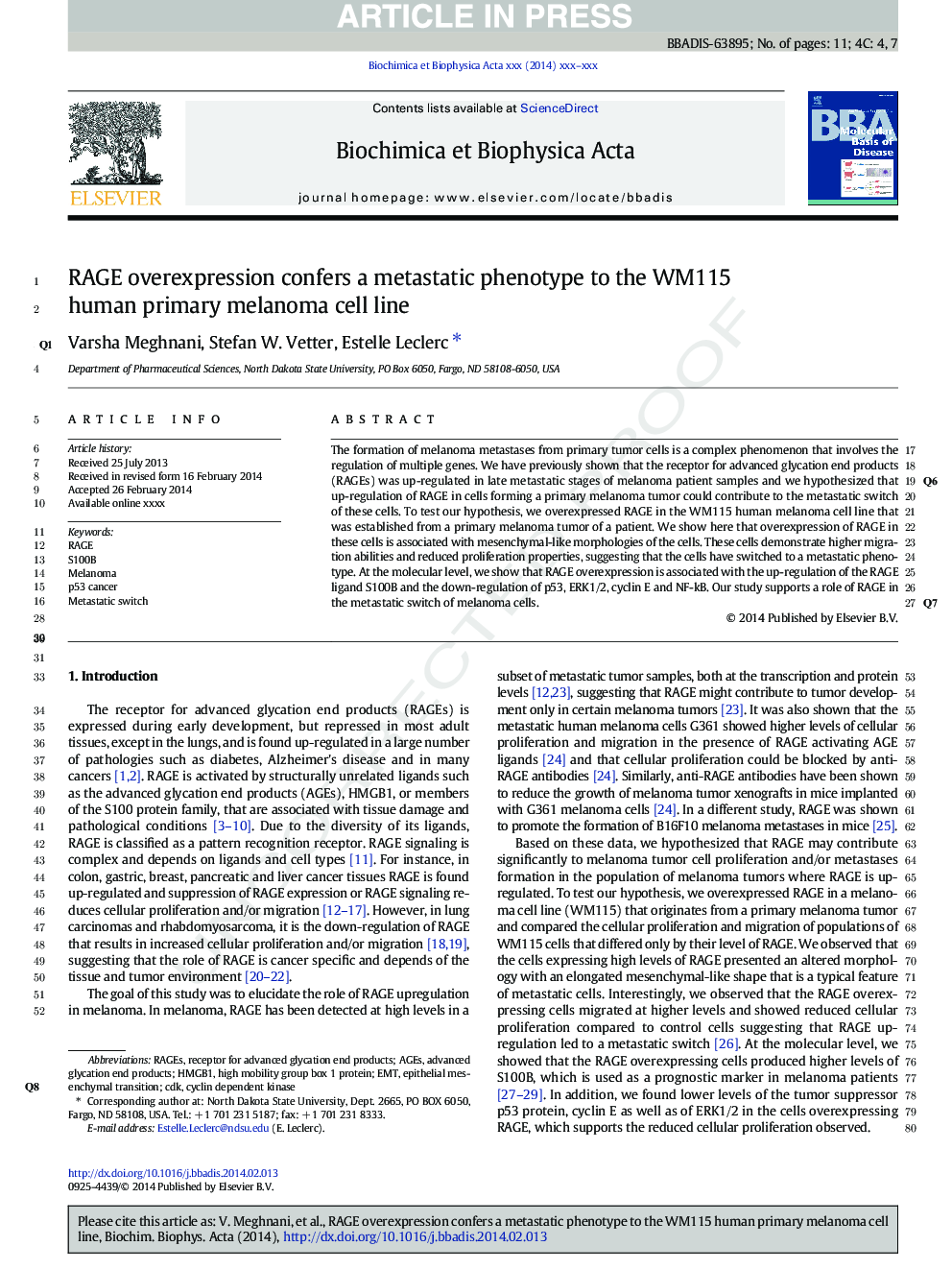| Article ID | Journal | Published Year | Pages | File Type |
|---|---|---|---|---|
| 8260224 | Biochimica et Biophysica Acta (BBA) - Molecular Basis of Disease | 2014 | 11 Pages |
Abstract
The formation of melanoma metastases from primary tumor cells is a complex phenomenon that involves the regulation of multiple genes. We have previously shown that the receptor for advanced glycation end products (RAGE) was up-regulated in late metastatic stages of melanoma patient samples and we hypothesized that up-regulation of RAGE in cells forming a primary melanoma tumor could contribute to the metastatic switch of these cells. To test our hypothesis, we overexpressed RAGE in the WM115 human melanoma cell line that was established from a primary melanoma tumor of a patient. We show here that overexpression of RAGE in these cells is associated with mesenchymal-like morphologies of the cells. These cells demonstrate higher migration abilities and reduced proliferation properties, suggesting that the cells have switched to a metastatic phenotype. At the molecular level, we show that RAGE overexpression is associated with the up-regulation of the RAGE ligand S100B and the down-regulation of p53, ERK1/2, cyclin E and NF-kB. Our study supports a role of RAGE in the metastatic switch of melanoma cells.
Keywords
Related Topics
Life Sciences
Biochemistry, Genetics and Molecular Biology
Ageing
Authors
Varsha Meghnani, Stefan W. Vetter, Estelle Leclerc,
